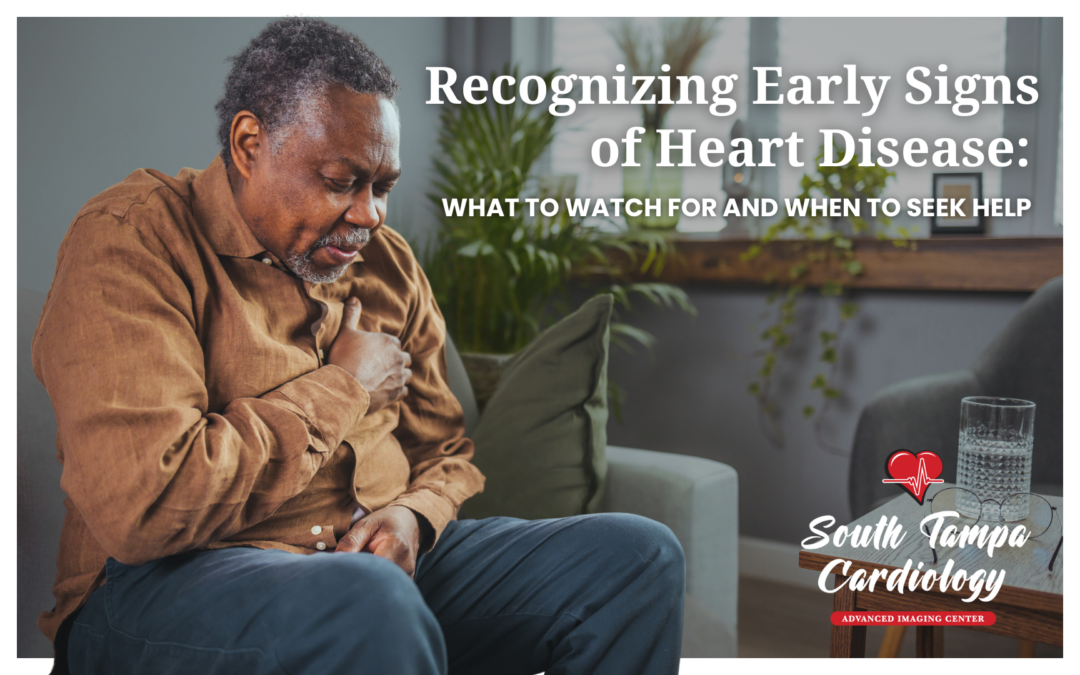Did you know that heart disease is the leading cause of death in the United States? According to the Centers for Disease Control and Prevention, someone dies of heart disease every 33 seconds. One of the best ways to reduce this risk is by recognizing common signs. In this blog, we’ll take a closer look at different types of heart disease and how to catch them early. We’ll also explore prevention strategies and how the experts at South Tampa Cardiology can help you.
Common Types of Heart Disease
When it comes to heart disease, most people’s minds jump to heart attacks or strokes. In reality, heart disease is a complex condition that can be broken down into different types. Here are some common types of heart disease:
- Coronary Artery Disease (CAD): CAD, the most common type of heart disease, occurs when the coronary arteries become blocked due to plaque buildup. Over time, these blockages reduce blood flow to the heart.
- Heart Arrhythmias: Also known as irregular heartbeats, this condition is caused by issues with the heart’s electrical signals.
- Heart Failure: Heart failure occurs when the heart can’t pump blood effectively, resulting in fatigue, shortness of breath and fluid buildup.
- Valvular Heart Disease: Characterized by damage to one or more of the heart’s valves, this condition affects blood flow through the heart.
- Cardiomyopathy: Cardiomyopathy is a disease that affects the heart muscle and its ability to pump blood properly.
- Peripheral Artery Disease (PAD): PAD is characterized by a blockage of blood vessels outside the heart (typically in the legs), which causes pain and reduces blood flow.
- Congenital Heart Defects: Structural heart problems, which may be present since birth, can affect the heart’s function and blood flow.
Early Warning Signs of Heart Disease
No matter which type of heart disease you have, it’s important to recognize signs early on. Here are some common heart disease symptoms:
- Chest pain or discomfort
- Shortness of breath
- Fatigue and weakness
- Irregular heartbeat
- Dizziness or lightheadedness
- Swelling in the legs or ankles
- Pain in the neck, jaw, shoulder or back
When to See a Cardiologist
Now that we’ve examined what heart disease is, you might be wondering: When should I seek medical attention? In general, you should visit a cardiologist if you experience any of the aforementioned symptoms. Problems such as chest pain, breathing issues or irregular heartbeats are all serious warning signs.
In addition to symptoms, consider your risk factors. You should consult a cardiologist if you’re over 40 and meet any of the following conditions:
- You have a family history of heart disease
- You have high blood pressure or cholesterol
- You have a sedentary lifestyle or have obesity
During your appointment, your cardiologist may use diagnostic testing and imaging to help visualize your heart. Then, they’ll craft a treatment plan that’s tailored to your heart health.
Depending on your needs, this plan may focus on prevention strategies (such as maintaining a healthy diet, exercising regularly and managing stress). In more serious cases, it may incorporate hands-on strategies (such as medication or interventional procedures). Either way, addressing your health needs early is key to lowering your risk and ultimately preventing heart disease.
South Tampa Cardiology: Your Partner in Heart Health
Are you looking for an expert cardiologist in Tampa? From treating uncomfortable symptoms to improving your overall well-being, there are many benefits to working with a cardiologist.
At South Tampa Cardiology, we offer state-of-the-art cardiovascular care. In addition to a highly experienced team, we provide advanced imaging (including the only spotlight cardiovascular CT scanner in Florida). Most importantly, we prioritize patient-centered care that addresses the unique needs of every individual. Reduce your heart disease risk by scheduling a consultation today!

